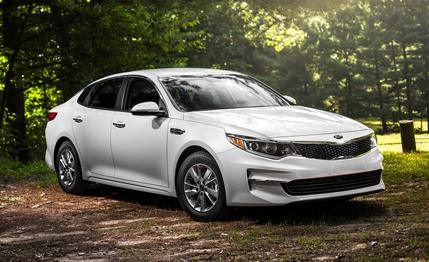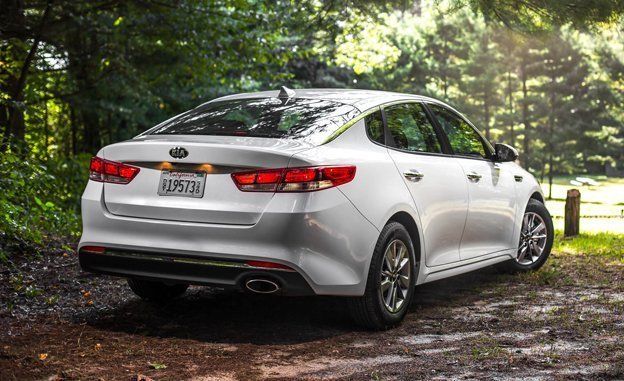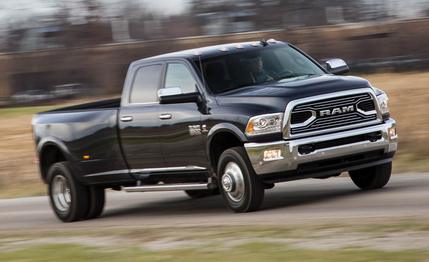 Instrumented Test
Instrumented Test
When it debuted at the New York auto show in 2010, the now-outgoing Kia Optima wowed spectators with its attenuated roofline and determined visage, penned under the direction of design boss Peter Schreyer. That Optima established Kia’s current design language, and the new, 2016 version doesn’t stray far from the script, with the tiger-nose grille, the arc of chrome along the roof edge, and the beltline that sweeps up at the rear. Details may have changed, and the car is 1.1 inches wider and a bit longer, but no one will confuse the new car with anything but an Optima.
Two of the three available engines carry over. The mainstay 2.4-liter four-cylinder is a naturally aspirated unit making 185 horsepower and 178 lb-ft of torque; it’s found under the hood of the base LX and the mid-level EX. At the top end, the 2.0-liter turbo returns brandishing 245 horsepower and 260 lb-ft; it powers the SX and the SXL. Both get a six-speed automatic. New to the party is the engine in our test car: a 1.6-liter turbo four married to a seven-speed dual-clutch automatic. Its 178-hp output is the lowest of the group, but its 195 lb-ft of torque betters the 2.4-liter.

Available only in the LX 1.6T, the 1.6-liter is designed to be the most economical offering of the bunch (apart from the Optima hybrid, still based on the previous-gen car), and its EPA ratings of 28/39 mpg city/highway are at the top of the class. Its seven-speed dual-clutch automatic, however, is a welcome break from the rising tide of CVTs in this category. It credibly mimics the smoothness of a torque-converter automatic at low speeds and delivers well-timed shifts under acceleration. That acceleration is pretty spry for a green guy, aided by the fact that the Optima LX 1.6T danced across our scales at 3241 pounds—more than 300 pounds less than the 2.0-liter SX. That figure is about on par with a four-cylinder Honda Accord.
It’s also more than 200 pounds lighter than the Ford Fusion 1.5-liter EcoBoost, which is perhaps the Optima LX 1.6T’s most direct competitor. In a battle between those two eco-misers, the Kia shines. Engine output is pretty much a draw—the Kia’s 1.6-liter makes 3 fewer horsepower but 10 lb-ft more torque than the Ford’s 1.5-liter EcoBoost—but the Optima’s fuel economy is better by 3 mpg in the city and 2 mpg on the highway (and that’s spotting the Fusion its optional auto stop-start system). And when it’s time to put your foot down, the Kia’s 7.3-second zero-to-60 time trounces the Ford’s 8.2-second result.
In fact, the case could easily be made that the 1.6 is the best of the three Optima powerplants. The 2.0-liter turbo got to 60 mph only half a second faster in our test, at a cost of 6 mpg in the city and 7 mpg on the highway. The 2.4-liter four (which we tested in the Optima’s close kin, the Hyundai Sonata) is both slower, at 7.9 seconds to 60, and thirstier. Speaking of the Sonata, when we tested the 1.6 turbo in that car—where it’s offered in the Sonata Eco—it was even quicker, hitting 60 in 6.7 seconds; that suggests our Optima, which had less than 500 miles on the clock, might have done even better with a more broken-in engine.
The LX 1.6T rides on the Optima’s standard suspension, not the “sport-tuned” version found in the SX and the SXL; even so, it need not make any apologies for its ride. Pleasantly tied down without excessive body motions, it’s also compliant enough to take the edge off harsh pavement, aided by this version’s 65-series rubber on 16-inch wheels. The low-rolling-resistance tires, however, led to a long stopping distance of 185 feet from 70 mph, although roadholding was a respectable 0.83 g.

That the 1.6-liter engine comes in only one trim level may be its main drawback. One step up from the base LX, the LX 1.6T is reasonably well equipped (Bluetooth, a backup camera, keyless entry), but if you want leather, seat heaters, or navigation, you need to climb up the ladder. The options list does, however, include navigation, a blind-spot warning system, and rear cross-traffic alert.
At this level, interior materials are pretty basic, with lots of grained black plastic, but at least the steering wheel is wrapped in smooth leather, the armrests are decently padded, and the console has plentiful storage. The previous Optima’s more driver-oriented dash has been replaced by a new design that emphasizes the cabin’s width. It’s a straightforward interior design with a gimmick-free layout of the controls that recalls the Honda Accord. The comfortable seating position is enhanced by a prominent dead pedal for the driver, and relatively thin pillars and a low cowl afford good visibility. The back seat boasts abundant legroom and adequate headroom under the sloping roofline as well as a short-trip-appropriate middle position.
The 2011 model brought the Optima in from the subprime fringe of the mid-size-sedan market, and the redesigned model ought to keep it there. While not the most powerful or luxurious variant, the LX 1.6T may be its most interesting, offering painless frugality that should speak to price-conscious sedan buyers.